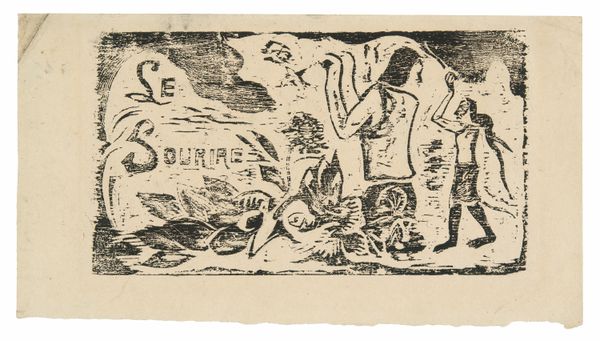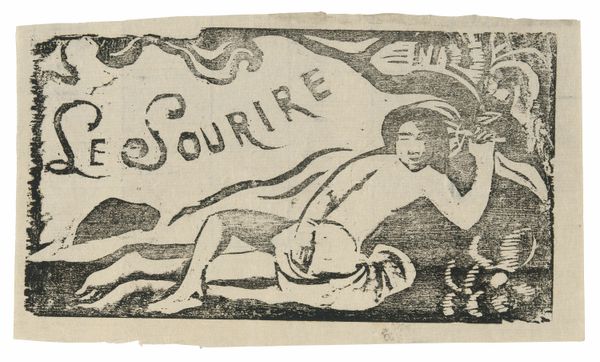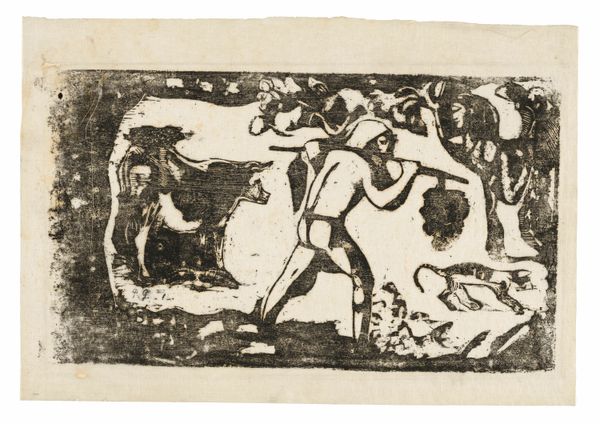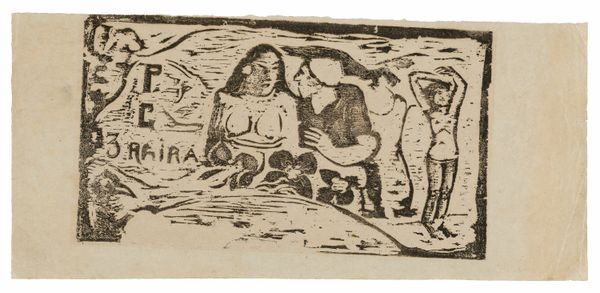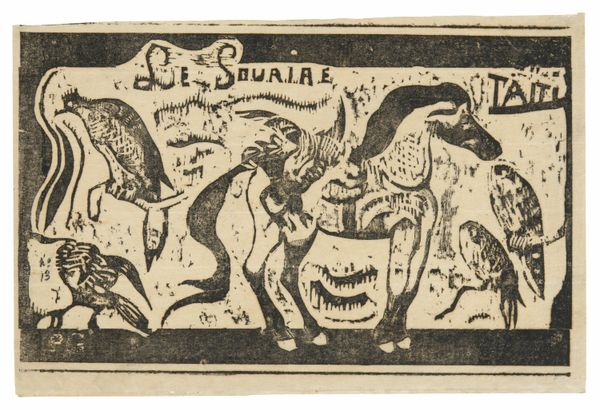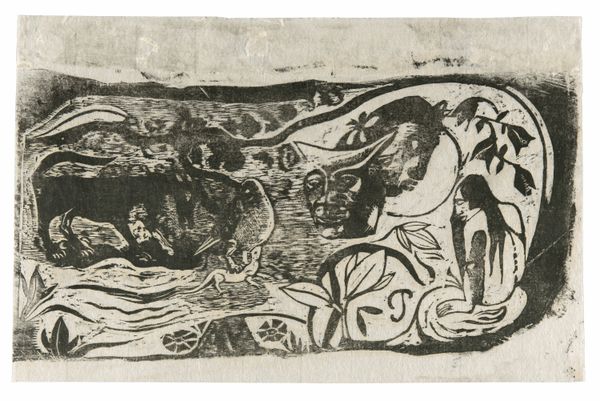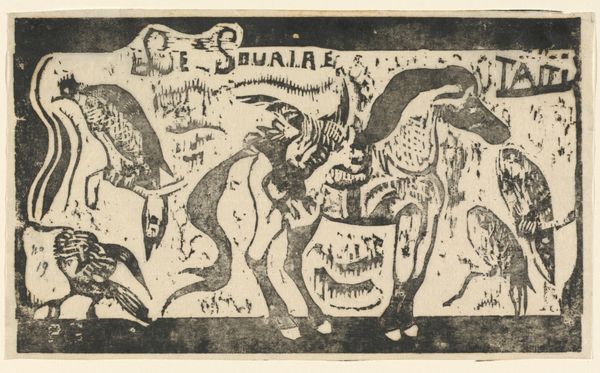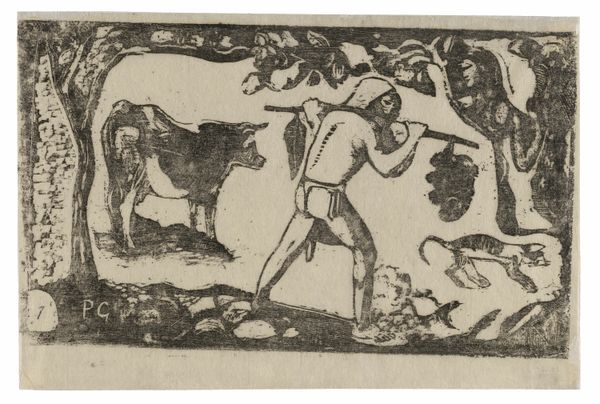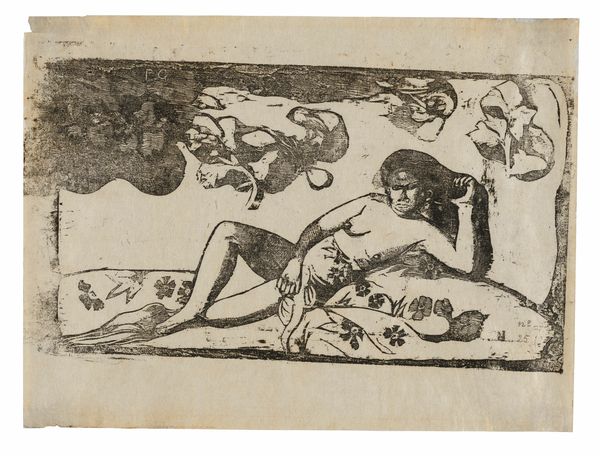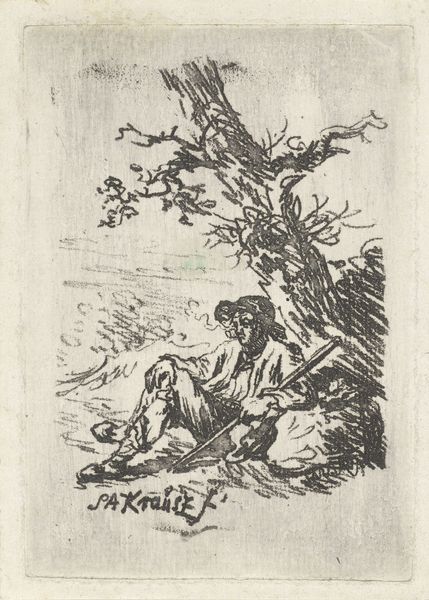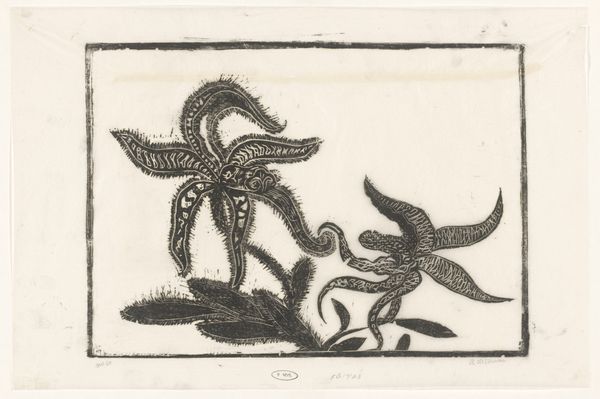
Tahitians, Flowers, and Leaves, headpiece for Le sourire 1899 - 1900
0:00
0:00
drawing, fibre-art, print, paper, woodcut
#
drawing
#
fibre-art
#
narrative-art
# print
#
landscape
#
figuration
#
paper
#
personal sketchbook
#
woodcut
#
orientalism
#
symbolism
#
post-impressionism
Dimensions: 104 × 183 mm (image), 123 × 215 mm (sheet)
Copyright: Public Domain
This woodcut on paper, made by Paul Gauguin, is a headpiece for the illustrated journal "Le Sourire" (The Smile). It was created around 1899, when Gauguin was living in Tahiti. Gauguin sought to escape the perceived corruption of European civilization. His Tahitian works, like this one, engage with the politics of imagery by presenting an idealised vision of Polynesian life. This is apparent in the depiction of the figures who are closely connected with nature. However, this vision was far from the reality of French colonialism, and scholars often point to the ways in which Gauguin's work romanticizes and exoticizes Tahitian culture. His work also raises questions about the institutional power of art. Gauguin made art in an idyllic location, but this was only possible due to the existing economic structures. To better understand the work, we can investigate French colonial history and the history of ethnographic imagery. With such historical and cultural context, the meaning of Gauguin's work emerges. It is contingent on the social and institutional conditions of its creation.
Comments
No comments
Be the first to comment and join the conversation on the ultimate creative platform.
